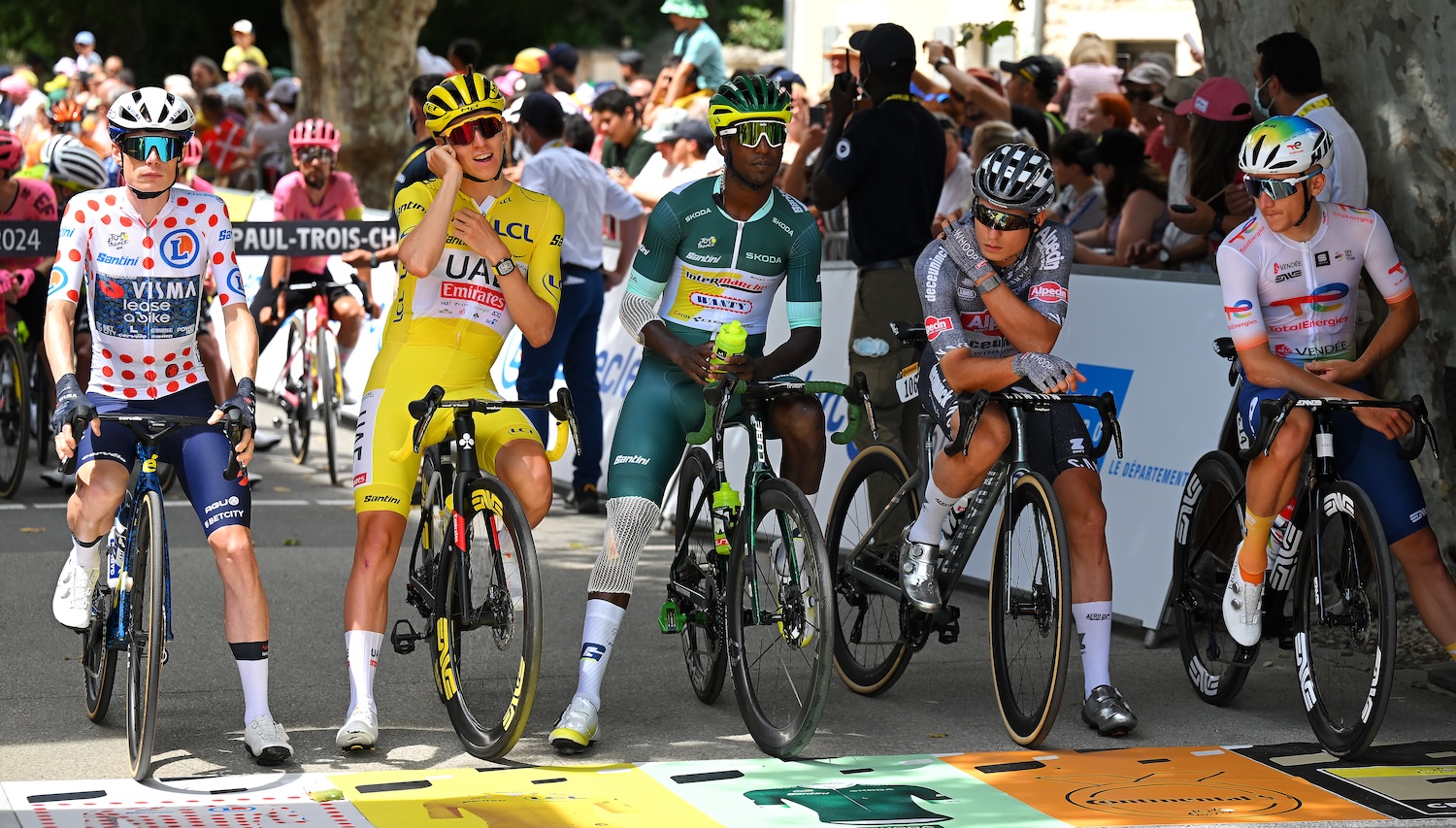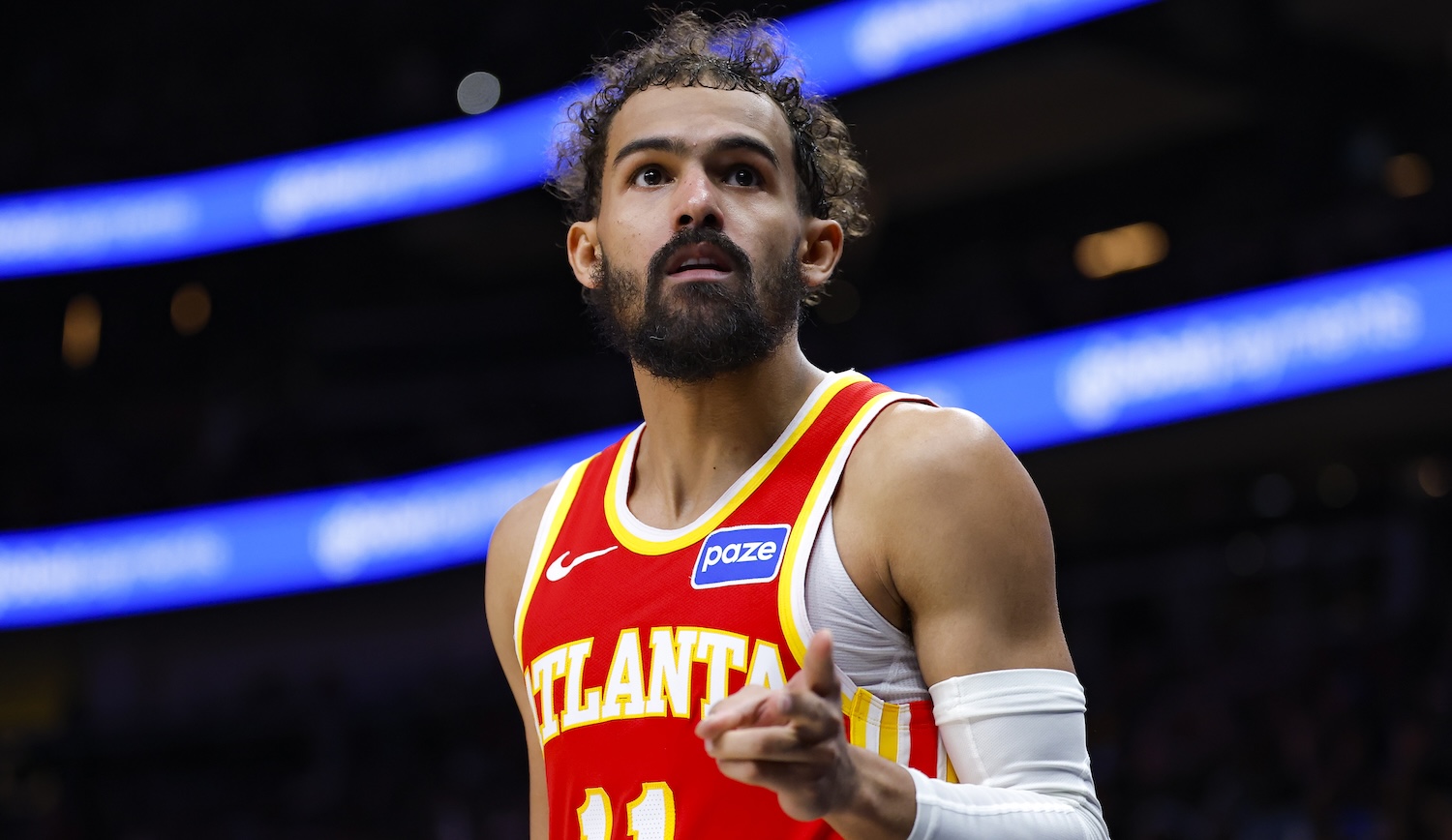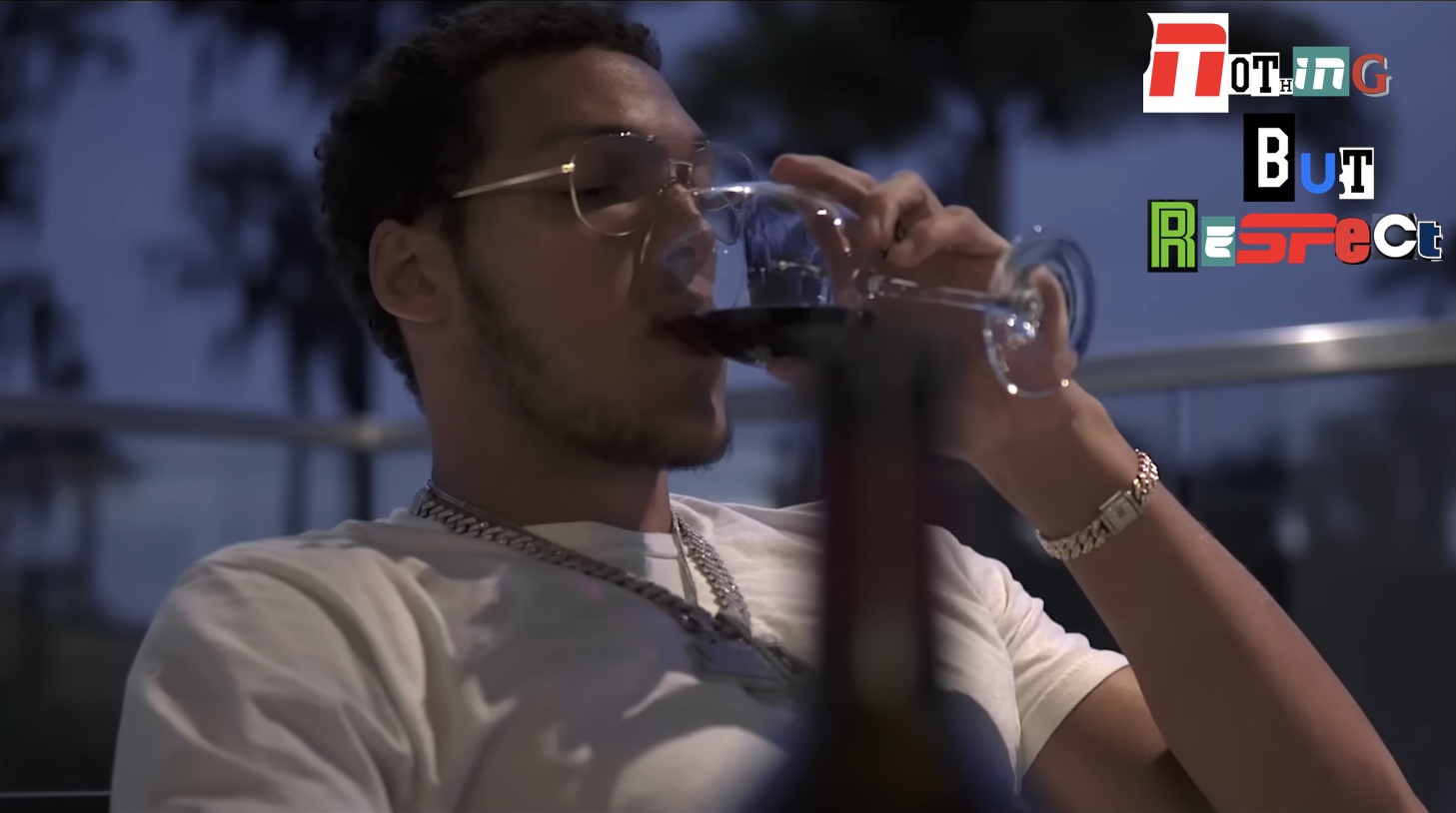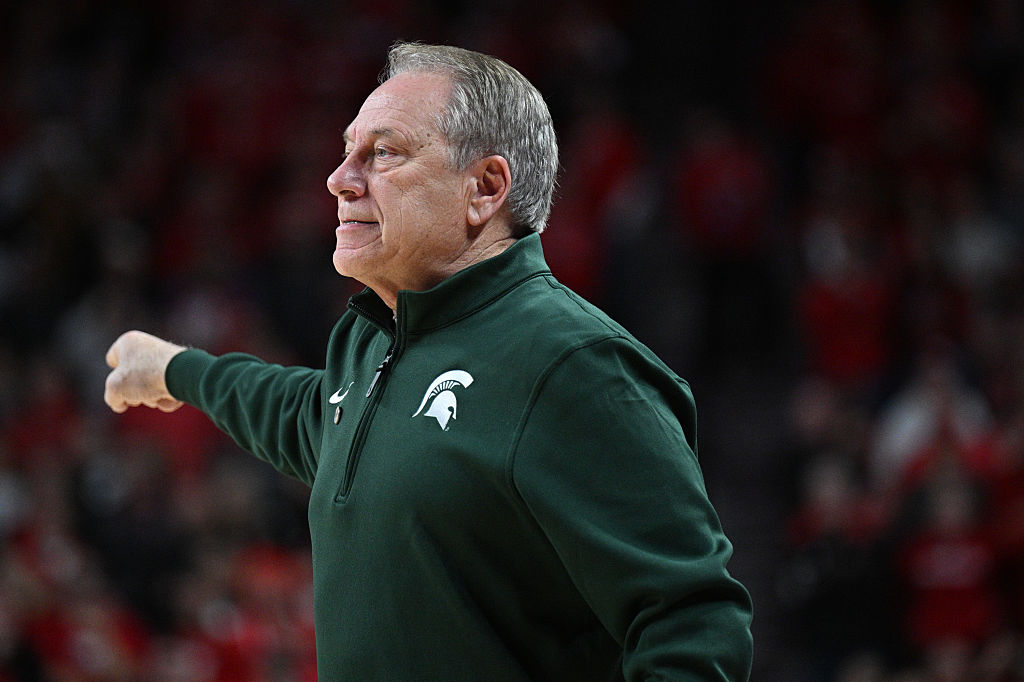Bonjour et bienvenue! The 2025 Tour de France begins Saturday in Lille. If you want to about read the rhythms of the sport, you're in luck, because we have a two-part series on that for you. If you want a preview of the three weeks of racing, you have come to the right place.
A lovely rhythm to the Tour de France is that while the precise route is different every year, the rough shape holds. The Tour always gets more difficult as it goes, with the race beginning on flatter terrain before hitting the Alps and Pyrenees in some order in the second and third weeks to assort the winner. Over the past 15 years the Tour's organizers, the Amaury Sport Organisation (ASO), have set aside their haughty sense of superiority and made their race significantly better by borrowing from what works in other races. Gone are the interminable, 200-kilometer-plus days of pancake-flat racing and predictable mountain slogs, replaced with mixed, Ardennes-style hilly stages and shorter, punchier mountain days.
The route that the ASO put together for 2025 is one of my favorite in recent memory. There is not a real mountain day until Stage 10, and the Tour won't climb anything rated either 1 or hors catégorie (HC, literally "out of category," too difficult for classification) until Stage 12. Yet the first 10 days will be anything but boring. Sure, the intent of the route design is to keep Jonas Vingegaard within a minute or so of Tadej Pogacar until the end of the second week of racing, but they did a great job of making both transitional stages and those set up for sprinters way more interesting than usual.
The intention of this guide is to serve as a place where you can come on any given day of racing and see what sort of stage you'll be in for. Below, you can find a day-by-day breakdown of the route, with some thoughts on each stage. But first, we have to introduce the guys who will be riding this thing.
Some Thoughts On The Guys Who Will Be Riding The Thing
The defining dynamic of the Tour de France will be the rivalry between two riders who've split the last five Tours. The protagonist of the Tour de France is Tadej Pogacar, who won six stages and the overall last year. With a 3-2 edge in yellow jersey victories over Jonas Vingegaard, Pogacar is currently on the winning side of the best rivalry the sport has seen Bernard Hinault and Greg LeMond in the 1980s. Where Pogacar rides with a feisty, almost reckless aggression, Vingegaard rides laconic. Where Pogacar spent the spring dominating the sport and even trying to win a bunch of races a Tour winner historically has no business even contending for, Vingegaard has barely raced this year. Historically, Pogacar is better and faster than Vingegaard on every type of terrain except the most demanding: at altitude, on long, punishingly difficult climbs. The two times Vingegaard beat Pogacar, he did so with perfect team tactics, and he picked the hardest, longest climbs on the Tour to make his move.
Pogacar's UAE Emirates team and Vingegaard's Visma team are both absolutely loaded. As the name suggests, UAE is funded by the Emirati royal family and they have more money than God. They are the closest thing the sport has to villains. Visma is a superteam in its own right, with the second biggest budget in cycling. Each team boasts a pair of climbing lieutenants who could compete for Grand Tours if given the chance (Vingegaard has two past winners helping him), and considerably stronger domestiques than any other team in the race. That means they will have the strength to force the race's tempo the majority of the time. Even on days when neither rider is necessarily trying to go all-out to destroy the other, the UAE-Jumbo rivalry will warp the shape of racing.
Below that pair, Remco Evenepoel is the rider to watch. He finished third last year, then won double Olympic gold in the road race and time trial. Evenepoel is a tiny bullet-shaped man; his body is a legitimate aerodynamic marvel. At the Criterium du Dauphine, the 2024 Tour podium raced each other for the first time in a year. Pogacar had a bad early time-trial, which prompted gleeful anticipation among cycling fans that maybe he'd slipped off his perch as the unquestioned best rider in cycling. He then spent the climbing stages stunting on poor Vingegaard and Evenepoel. The third-place spot at that race went to Red Bull's Florian Lipowitz, who will be riding alongside Primoz Roglic, the best rider of his generation not to win a Tour. The other riders targeting Evenepoel's podium spot or at least a top-five finish, in order of how much I like their chances, are João Almeida, Simon Yates, Mattias Skjelmose, Matteo Jorgenson, Adam Yates, Carlos Rodríguez, Santiago Buitrago, Felix Gall, and Ben O'Connor.
The other organizing force is the group of teams trying to win sprint stages. These are Skjelmose's Lidl-Trek, riding for Jonathan Milan; Evenepoel's Soudal-Quick-Step, riding for Tim Merlier; and, most foreboding of all, Alpecin-Deceuninck riding for Jasper Philipsen. Philipsen has won nine stages at the past three Tours, and his extremely strong team is here in France for the express purpose of adding to that tally. For a lead helper, he has Mathieu van der Poel, the one man who has beaten Pogacar with any consistency basically ever. Milan and Philipsen can both get over simpler climbs reasonably well, but Merlier has been maybe the best pure sprinter of the season. He is untested, however, so the battle should be fun. Last year's triple stage-winner and green jersey–holder Biniam Girmay is back, with a team built around him, but he's been pretty bad this season, so who knows if he'll follow up his amazing 2024 Tour. Dylan Groenewegen, Jordi Meeus, Arnaud De Lie, and, if we are lucky, Wout van Aert will all contend for sprints as well.
Time for the route. The number of steam nose emojis indicates how exciting I think the racing will be in a given stage. The maximum number of steam nose guys a stage can earn is seven. My "pick to click" is self-explanatory. Following the rules of the Escape Collective fantasy game, I am forced to pick a different rider for each stage, even though Pogacar will probably win like four stages again.
The Route
Stage 1: Lille Métropole to Lille Métropole - 184.9 km, Sat. July 5
😤😤
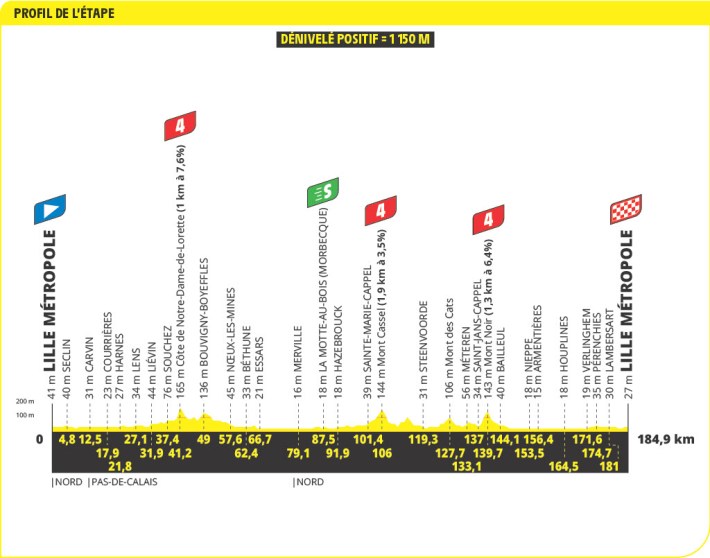
This is a pretty straightforward Grand Départ, the first time the race has kicked off inside France in a few years. In fact, the entire race stays within French borders this year, which is quite the rarity. Stage 1 is a standard sprint stage, and though there are three categorized climbs, none of them are harsh enough nor close enough to the finish line to dislodge the pure sprinters. After a few corners, the finishing straight is long and broad, so whoever wins will have to put forth a wicked turn of speed. A stage like this would normally merit one steam nose guy, but because the yellow jersey is on the line, it gets two.
Pick to click: Philipsen.
Stage 2: Lauwin-Planque to Boulogne-sur-Mer - 209.1 km, Sun. July 6
😤😤😤😤
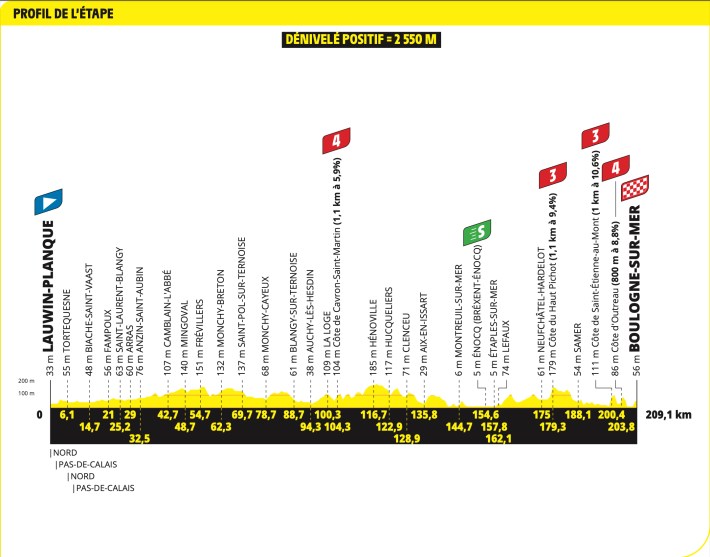
This stage may present as more classic first-week fare, but the finish is very tricky. Let's take a closer look. Here's what the last 10 kilometers look like:

That's a slightly easier finish to an Ardennes classic, which is my favorite type of race. Things will be hard, but not impossible for a team to control. That is such a fun dynamic, especially since the finish is not pancake-flat. The final kilometer is uphill, and the finish is just around a right-hand corner. I don't think it's quite hard enough for the general classification (GC, the overall standings) guys to really start fighting each other, though you never know with UAE. Look for a classics guy or one of the more rugged sprinters to win this one. If Mads Pedersen was around, I'd pick the hell out of him.
Pick to click: Girmay.
Stage 3: Valenciennes to Dunkerque - 178.3 km, Mon. July 7
😤
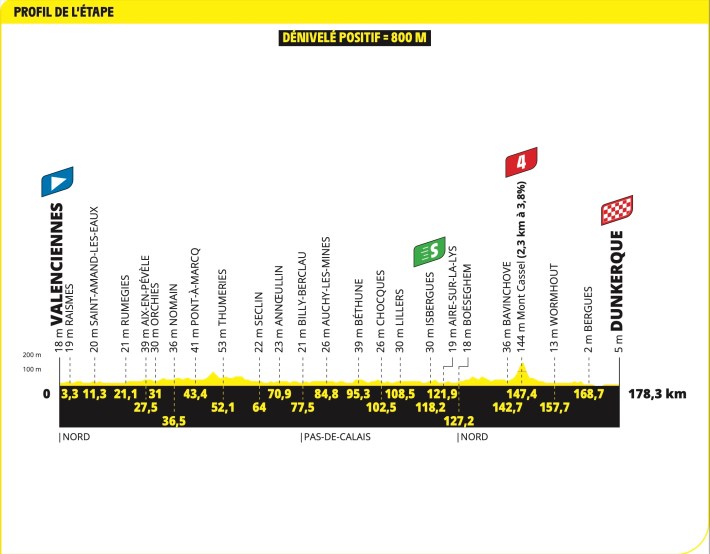
The second straight stage to run north and finish on the English channel. The run-in is a mildly tortuous one, sliding alongside the Canal Exutoire, but there is no real topography to speak of. We may get a headwind on Stage 3, and let's hope so, because this stage looks pretty boring.
Pick to click: Merlier.
Stage 4: Amiens Métropole to Rouen - 174.2 km, Tue. July 8
😤😤😤😤
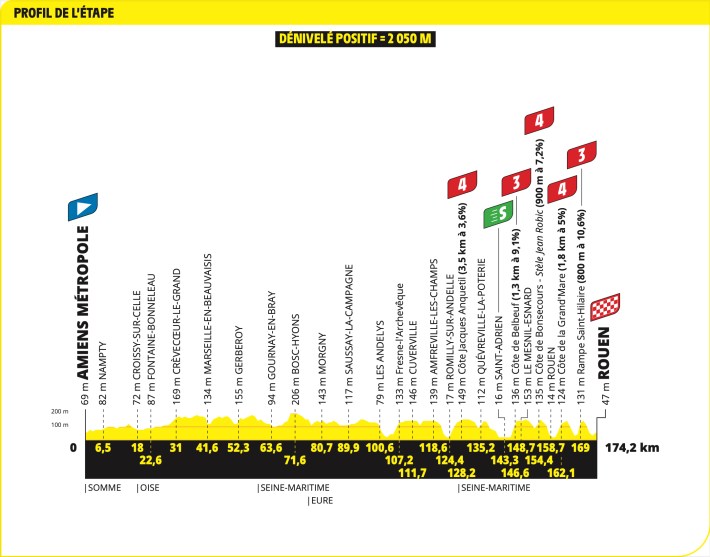
Another really exciting Ardennes day, this time with the serious climbing closer to the finish line. The Cat. 3 listed here is less than a kilometer long, but it is steep enough (with a section at 15 percent) and its summit close enough to the line (roughly 5.5 kilometers) that it will probably decide the stage. The only question is who will get their team to drill the previous three climbs to set up such a move. This stage has Pogacar written all over it, especially because it's so early in the Tour that the breakaway probably will not be allowed to fight for the stage win. I am not going to pick him, however, and while I do think a Danish guy will win, it won't be Pogacar's arch-rival. The end of this stage feels like the end of Amstel Gold. That's the one big Ardennes race Pogacar didn't win this year. Who did?
Pick to click: Mattias Skjelmose.
Stage 5: Caen to Caen - 33 km (ITT), Wed. July 9
😤
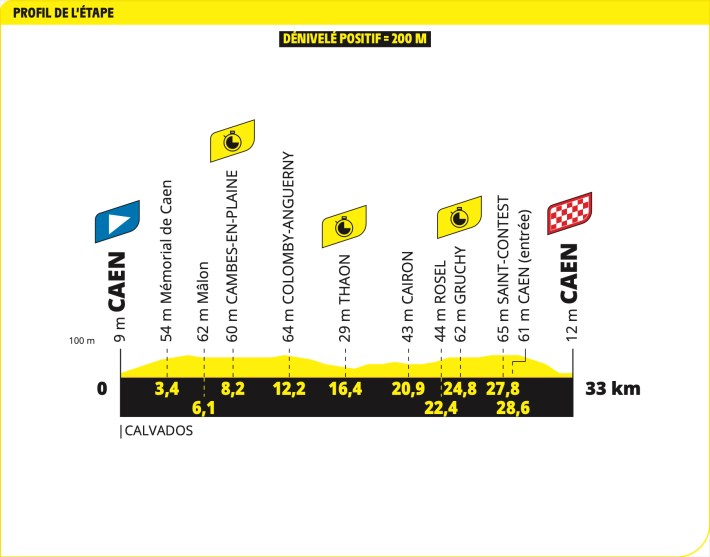
Time trials are interesting in their assortment of riders, but pretty boring as televised spectacles. This stage begins and ends in Caen (not Cannes), with a short sojourn into the small hills of the Calvados region in between. It's pretty flat but also that doesn't really matter, since Remco is the best at every kind of ITT.
Pick to click: Evenepoel.
Stage 6: Bayeux to Vire Normandie - 201.5 km, Thu. July 10
😤😤😤
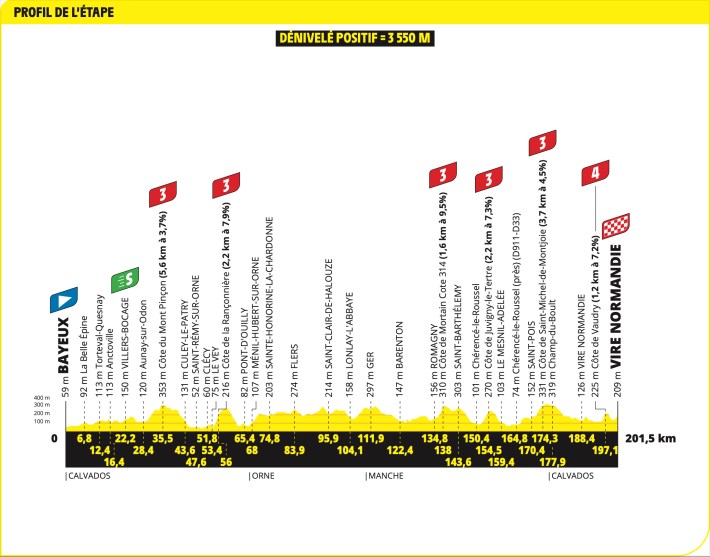
This hilly stage moves south from the coast, and the five Cat. 3s should soften the peloton up ahead of the Cote de Vaudry. There are a couple hundred meters over 10 percent in the middle of the short climb, which someone will attack on. It's so close to the line, but not so hard that a chase will not be motivated. I don't think the pure sprinters will be getting to the line after 3,550 meters of climbing, but even if they do, the stage finishes on a 14 percent kicker. Good thing Lidl-Trek have, in addition to a top pure sprinter, the best uphill sprint specialist around. This could be one for Mathieu van der Poel and Wout van Aert to go at each other as well.
Pick to click: Thibau Nys.
Stage 7: Saint-Malo to Mûr-de-Bretagne (Guerlédan) - 197 km, Fri. July 11
😤😤😤
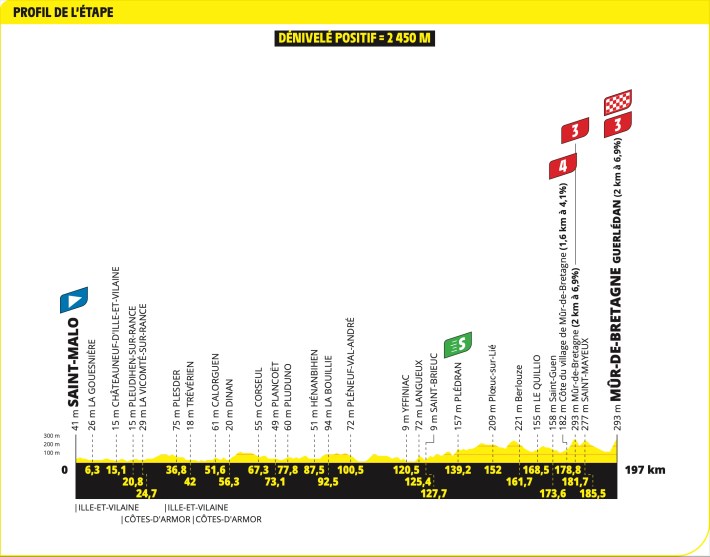
Four years ago, the second stage of the Tour finished atop the Mûr-de Bretagne. After pulling back a few early attacks, van der Poel unleashed a blistering attack to take the stage by a huge margin and ride into the yellow jersey.
There's no reason to think any other rider can stick with him this year. Many will try, however, and the peloton will get a first look at the Mûr before tackling it at the finish. The end of this stage, then, will be really fun, and while the first 80 percent looks flat and mostly featureless, the peloton will be slogging along France's northern coast. This region is infamous for gnarly crosswinds, the sort that could split the peloton and force everyone to work extremely hard to stay in contact. As is the case in a classics race, the riders that arrive in Mûr-de-Bretagne will probably be tired.
Pick to click: Van der Poel.
Stage 8: Saint-Méen-le-Grand to Laval (Espace Mayenne) - 171.4 km, Sat. July 12
😤

The one serious misstep made by Tour organizers this year was filling the second weekend of racing with two boring, totally flat sprint stages. What a missed opportunity! The Mûr stage would have been great Saturday fare, but no, fans will be left to watch two of the few pure sprinting stages on the weekend. This is a great time to make a big show of doing something with your family and friends. You can tell them how much you are sacrificing by stepping away from the TV for a whole weekend. Make sure to groan and wheeze about what a good person you are being for doing so. Just make sure to step away from them for the last five kilometers. The peloton will have to handle two big roundabouts in the final three kilometers, which will make for a fun positioning battle.
Pick to click: Milan.
Stage 9: Chinon to Châteauroux - 174.1 km, Sun. July 13
😤
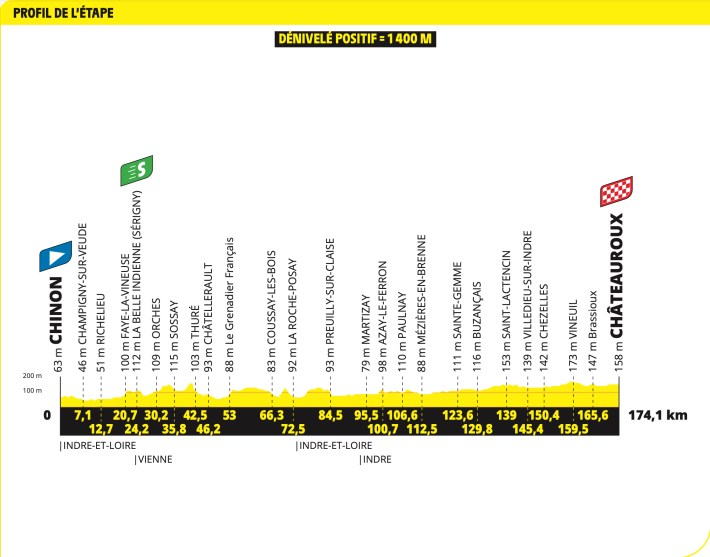
The Loire valley is known primarily for its white wines, making Chinon a regional oddity, as they produce a slate of notable dry reds. The cabernet franc is a specialty, and you can enjoy one in the famous Caves des Painctes, a series of tunnels turned into a massive wine cellar. The extremely influential reformation-era French writer François Rabelais is also from Chinon. Raise a glass to him!
A flat finish with an arrow-straight final 1.5 kilometers.
Pick to click: Groenewegen.
Stage 10: Ennezat to Le Mont-Dore (Puy de Sancy) - 165.3 km, Mon. July 14
😤😤😤😤😤
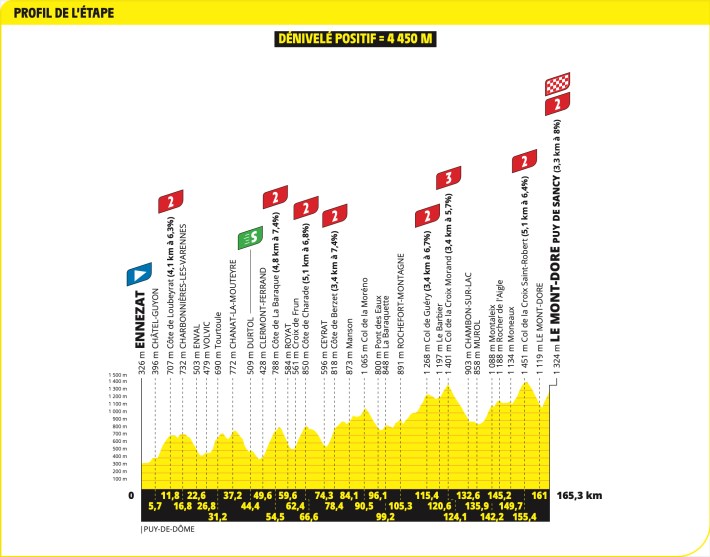
Finally, some quality food. The first mountain stage of the 2025 Tour is the only one in the Massif Central, which is a mountain range I have always found very lovely. Though none of Stage 10's eight categorized climbs are more difficult than Cat. 2, there are eight of them, with a series of sneakily difficult uphill drags scattered between them. This is good shit, is my point, and with the first Cat. 2 placed right after the starting line, there will be nowhere to hide. The racing will be fast and hard all day, and you can expect some huge attacks on basically every climb. The stage hunters will be aggressive, but this feels like a GC day. The critical reason for that is that the first rest day is on the horizon, and whoever gets the yellow jersey or makes the first big GC statement will force their rivals to sit with the pressure of having lost for an extra day.
Pick to click: Pogacar.
Stage 11: Toulouse to Toulouse - 156.8 km, Wed. July 16
😤😤
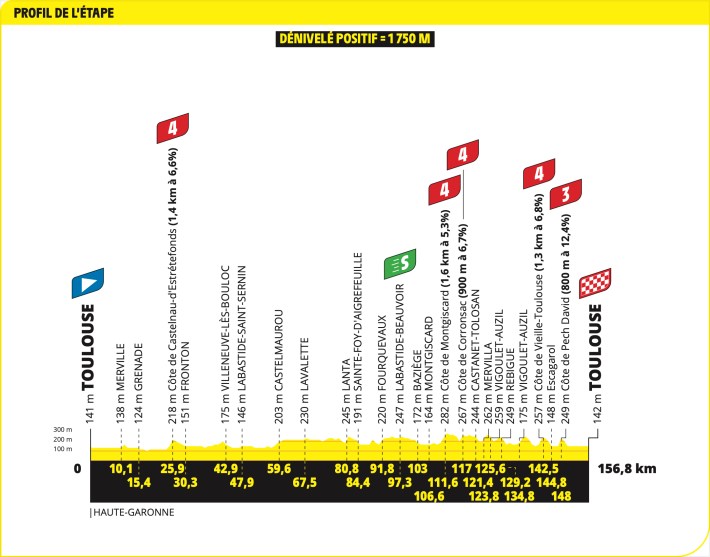
The best thing this circuit around Toulouse and its surrounding burgs has going for it is how big the crowds will be. Fairly consistent riding through places where people live means that the streets should be lined and the fans will throng around the finishing zone. The Côte de Pech David has been categorized as a 4 or a 3 depending on the year, though don't be fooled. It's short, but there's a 20 percent ramp at the start that should shake things loose. This could be a breakaway day, but it feels more like the sprint teams will be able to chase down anyone who gets over the top with daylight.
Pick to click: Meeus.
Stage 12: Auch to Hautacam - 180.6 km, Thu. July 17
😤😤😤😤😤😤
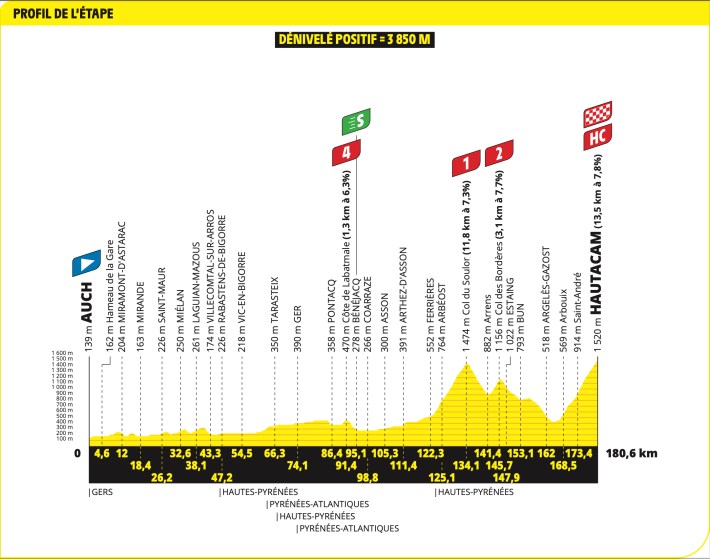
The race moves to the Pyrenees for three pretty gnarly, uninterrupted days of hard climbing, beginning with the fearsome Hautacam. The summit is a fixture of the Tour, and there have been two summit finishes here in the last 16 years. In both 2014 and 2022, the winner of that stage won the Tour. Three years ago, this is where Vingegaard solidified his first yellow jersey by putting more than a minute onto a depleted Pogacar. Our major climbing stage of the Tour is slightly easier than last time, but the Hautacam itself is so brutal that it doesn't really matter.
There is nowhere to hide on the Hautacam. No trees line the switchbacks, and there will no shade for the riders, no relief from what will probably be a brutally hot day other than what they can get from the teeming thousands who will come to scream for their favorites. The first seven kilometers kick back and forth between sections around six percent to sections around eight, but it's the center of the climb that will decide who wins. Riders will have to tackle two kilometers of double-digit gradients halfway through the climb. That's where the stage winner will probably make their move.
Pick to click: Vingegaard.
Stage 13: Loudenvielle to Peyragudes - 10.9 km (ITT), Fri. July 18
😤😤😤
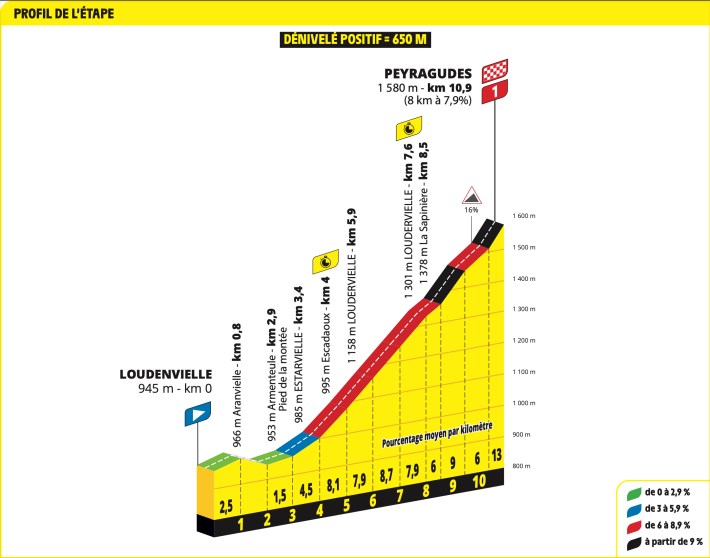
The race's second and final time trial will be a brutal one, sandwiched between two summit-finish days. What makes Peyragudes such a difficult climb, and such an interesting one for an ITT, is that it saves its best for last. The final three kilometers will be horribly difficult, especially because riders will have to measure their efforts on the way in without shipping too much time. Eleven kilometers is basically a sprint, but anyone who goes too hard too early will be punished by that finishing kicker. Prepare for some of the most herky-jerky riding you'll ever see in a time trial.
Also, I have to note that the profile for the stage given in the official Tour roadbook is hilariously misleading. This is a crime against the y-axis.
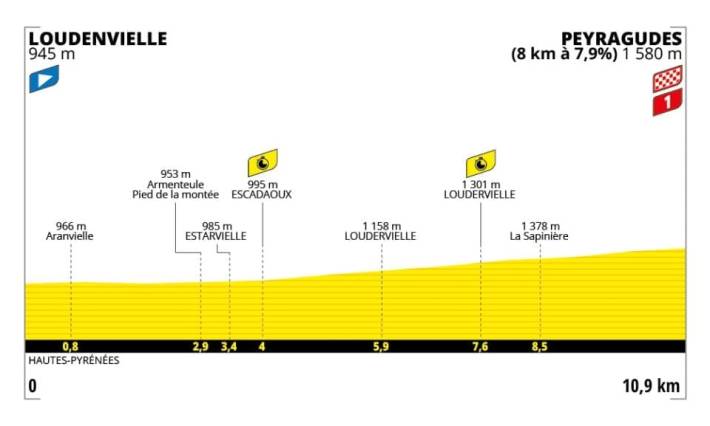
Pick to click: It's sort of pointless to pick someone besides one of the big three, especially since Evenepoel is such an amazing time trialist, but I must obey my own rules, so: Roglic.
Stage 14: Pau to Luchon-Superbagnères - 182.6 km, Sat. July 19
😤😤😤😤😤😤😤
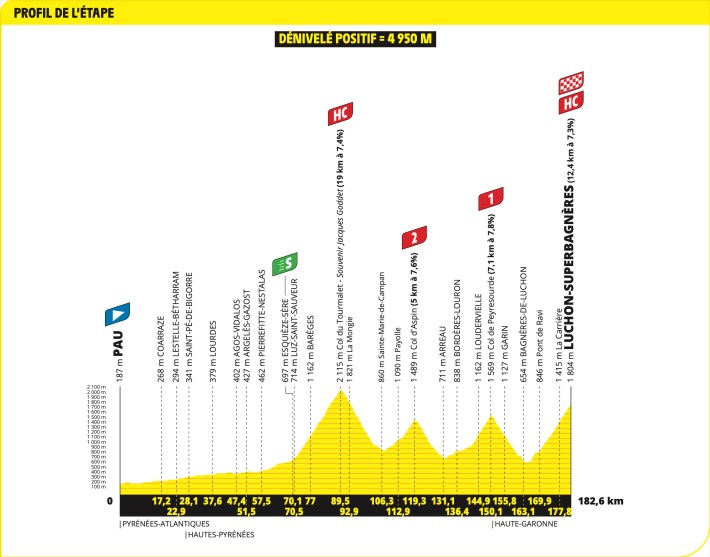
The name of the last climb is Luchon-Superbagnères, but all I see is what looks like the French word for Super Banger, which is what this stage will be. This is the hardest stage of the Tour, with nearly five kilometers of vertical gain spread out over the famed Tourmalet, the beautiful Col d'Aspin, the always-featured Peyresourde, and Luchon-Superbagnères. The race is going to be 2,000 meters above sea level, so altitude could play a role here. The final climb is one of the easier HCs on the route, though it is still a beast, especially after the previous three. This is the terrain that Vingegaard loves: long, steady climbing at altitude, at the end of a hard day. It will be fascinating to watch the tactics on this stage. Which of UAE or Jumbo will take control, and when will they strike? Is the Tournalet too early for either team to feel comfortable pushing the pace? Who will get a teammate in the breakaway, and how will they use them later in the race? This is the sort of race that should feature on a Saturday.
Pick to click: Eddie Dunbar.
Stage 15: Muret to Carcassonee - 169.3 km , Sun. July 20
😤😤😤
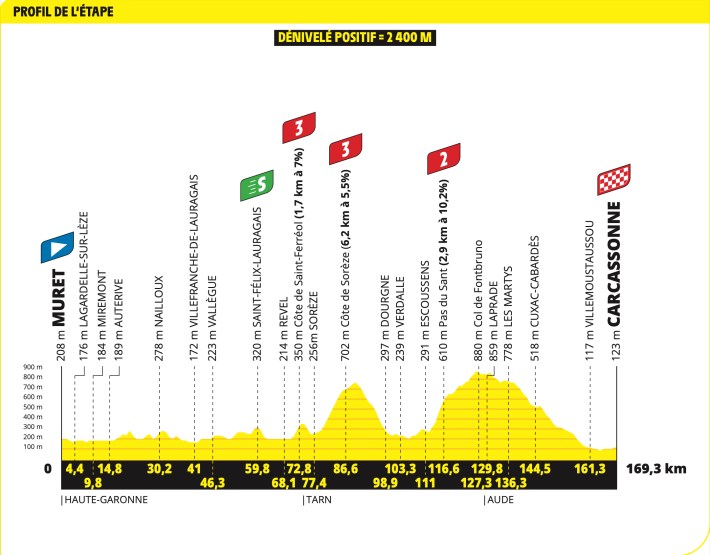
Here we have the first obvious breakaway stage of the Tour. I don't think any of the big teams will want to expend serious energy to chase down moves after the efforts of the previous three days, and though the sprint teams could conceivably try to keep the break in check, there will be so many teams motivated to stick a rider in the break that I am not sure they will be able to keep a lid on things either.
Stage 15 is also deep enough into the race that the teams that have not won a stage yet will start to feel a little desperate. There are not many more chances left to win something. The climbers will get their say later, but this is one for the stage-hunting artists.
Pick to click: Neilson Powless.
Stage 16: Montpellier to Mont Ventoux - 171.5 km, Tue. July 22
😤😤😤😤😤

This stage is extremely simple: 152 kilometers of nervous anticipation, then one of the most famous climbs in Tour de France history. The last time we had a summit finish on Ventoux, so many fans showed up and choked the roads that Chris Froome's ass was running up the road.
What sort of climb is Ventoux? It is technically in the Alps, though its summit looks and feels like the surface of the moon. Scant vegetation clings to its lunar slopes. The peloton will be climbing Ventoux from the east side, which is slightly easier. Still, easier is relative, as the start and finish of the climb has sections well over 10 percent. This feels like another GC day.
Pick to click: I regret not allowing myself any repeats. Simon Yates.
Stage 17: Bollène to Valence - 160.4 km, Wed. July 23
😤😤

Stage 17 is a classic transition stage, winding north through the Rhône Valley on the eastern foothills of the Alps. Sandwiched as it is between two hard days, none of the GC teams will want to chase, though the sprint teams will want to, given that this is the final obvious sprint day. Something that makes the shape of this stage hard to discern is that it takes place so close to the end of the race that there's no way of knowing how many riders will have dropped out, whose teams will have been depleted by crashes and the heat. If, say, Alpecin has lost four riders, I don't think they have the juice to chase this one for Philipsen.
Pick to click: Van Aert.
Stage 18: Vif to Courchevel (Col de la Loze) - 171.5 km, Thu. July 24
😤😤😤😤😤😤
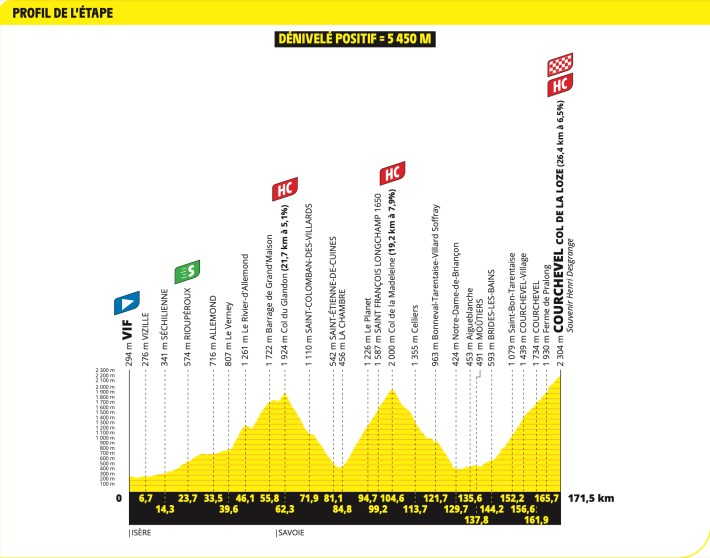
I respect the ASO's dedication to inflicting maximum psychic trauma on the riders. The three HC climbs on offer here are all classic Alpine fare, which means interminable slogs up medium-steep mountains, forever. Nothing here is too spiky, but the thing that makes all three climbs hard is their length and their altitude. Three times the peloton will have to vault from a couple hundred meters above sea level to nearly 6,000 feet. The summit of the Col de la Loze is the high point of this year's Tour.
Here's the psychic trauma bit: It's also where Vingegaard smote Pogacar to seal the 2023 Tour. The pair were within seconds of each other throughout the first two weeks of the race, and it seemed we were heading for one of the closest finishes in Tour de France history. Then, Vingegaard smashed Pogacar on Stage 16 of that year's Tour to seize control. The next day, Pogacar tried to respond and instead his legs fell off. Col de la Loze was the stage for one of Pogacar's most painful defeats, a loss he memorialized by grunting, "I'm gone, I'm dead," into his radio.
You know they have this one circled. You also know Jumbo will feel confident, having destroyed Pogacar here before.
Pick to click: Jorgenson.
Stage 19: Albertville to La Plagne - 129.9 km, Fri. July 25
😤😤😤😤😤😤
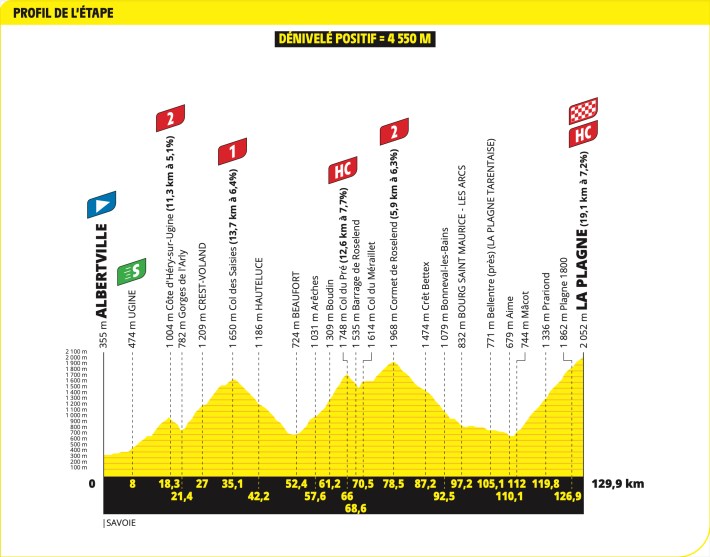
Stage 19 is the final opportunity for anyone to gain time. At 129 kilometers, the stage is fairly short for a big mountain day, which means the racing should be hard and fast and difficult to control. The Tour has not visited La Plagne since 2002, and while it's long and high enough to be decisive, it is remarkably short on hard sections to launch attacks from. Still, its place in the race means there will be GC action, and perhaps also a breakaway contending for the stage win. This sort of feels like the Isola 2000 stage last year where a breakaway was in position to win, only for Pogacar to get greedy and win for fun.
Pick to click: Ben Healy.
Stage 20: Nantua to Pontarlier -184.2 km, Sat. July 26
😤😤😤
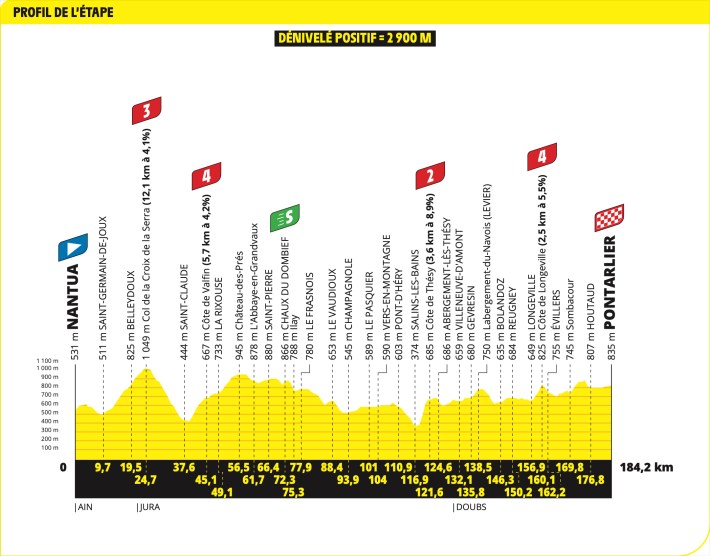
It feels somewhat anticlimactic for the final day of racing before Paris to be so devoid of consequence, but instead of a last GC showdown, we have what seems like a classic breakaway day. Everyone who has not won a stage yet will be trying as hard as they can to take this one, and the big sprinters may be hesitant to burn their resources given what awaits on Sunday. This stage ends a few kilometers from the Swiss border, a relative stone's throw from Bern and Geneva. After the stage ends, riders will schlep back to Paris for the final day of racing, and I will finally return my sure-to-be crazy-smelling rental car.
Pick to click: Søren Wærenskjold.
Stage 21: Mantes-la-Ville to Paris (Champs-Élysées) - 132.3 km, Sun. July 27
😤😤😤😤😤

Ah, Paris! Typically, Stage 21 of the Tour is a parade, a totally uneventful photo-op that turns into a race at the very end of a slow day. Not this time. The Olympic road races were so great that the ASO is shaking things up and letting the climb up Montmartre get some shine. The crowds in Paris were unbelievably good last summer, and they'll surely be just as packed this time around. Unfortunately, I don't think the race will end in the breakaway thrill that organizers hope it will. The climb is difficult, but probably not difficult enough to actually unseat any of the sprinters, and the Olympic road race is different because it's raced between national teams, which are smaller and don't use race radios. Both of those make moves easier to control. Surely someone will try something, and while I am skeptical it will work, I am certain this will be a fun stage.
Pick to click: De Lie.
